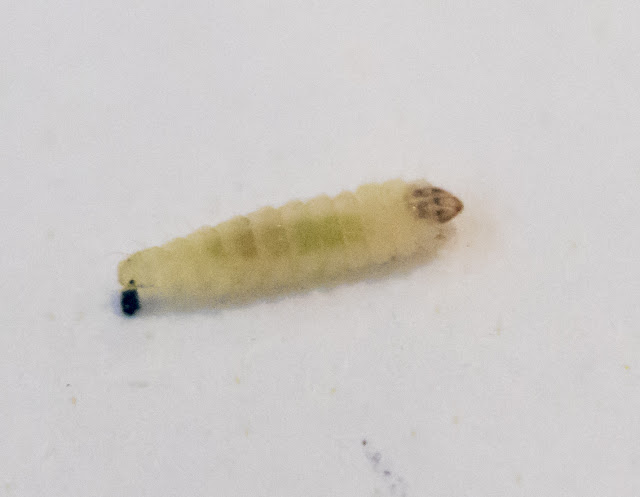A successful visit this afternoon, with a reasonable good variety of leaf-mines found, concentrating entirely on Alder. Plenty of birds around, Blue Tits, Coots, Moorhen, Cormorants, Great Crested Grebes.
I concentrated mainly on Common Alder,
Alnus glutinosa, but I was also able to spend some time on the Italian Alder,
Alnus cordifolia and the Grey Alder,
Alnus incana .
One of the really enjoyable finds was one mine of
Heterarthus vagans on one of the large Italian Alders at the southern edge of The Ocean. The pupation disc was really nice and obvious, and gives us the possible opportunity of rearing the pupa through to adulthood. I have found this species once before at Leybourne, earlier this month - although that time I had it down as on Common Alder, when found on the 19th September. It is known to occur on both species.
Another excitement was my first sighting (as far as I know) of
Phyllonorycter stettinensis, the only
Phyllonorycter to be found on the upperside of Alder leaves. This was seen on Common Alder. The appearance of this
Phyllonorycter was noticeably different to the normal matt colours of those on the underside of the leaves - the
P. stettinensis mine is a glossy light green, then turning brown. The mine is often over a vein, and may be quite strongly creased.
Another species I could recognise was
Phyllonorycter rajella, with its strong crease on the surface of the mine, close to the midrib of the leaf.
More difficult to be sure of were the relatively uncreased oval mines on the underside of the leaves close to or away from the midrib, which I would imagine were mainly
Phyllonorycter kleemaniella - but difficult to separate clearly from
Phyllonorycter froelichiella, which is also oval and uncreased, but longer, normally over 25 mm long.
Here is a fairly reasonable picture of what I think is a reasonably early (and active) stage of the sawfly mine
Fenusa dohrnii in an Italian Alder leaf. It was towards the upper side of the leaf, with frass tending to gather in the centre of the mine (as in one of the Blaadmineerders photos for example), and "spilt out" over a major vein towards the margin of the leaf, as noted for this species. There was only one mine in this particular leaf, but most other factors seemed to fit, and it is a relatively common mine.
The larva takes about three weeks to complete its mine, and then pupates outside, eventually becoming a tiny (c. 4 mm.), mainly black, sawfly. At the moment this mine is relatively translucent and has not yet developed the opaque mid-brown colour, often in the end highly crinkled, of the mine to be seen in its later stages.
Slightly less exciting than some of the other leafminers were reasonable numbers of the usually common
Agromyza alnivora, the only fly miner found on Alder species in the UK to my knowledge.







































